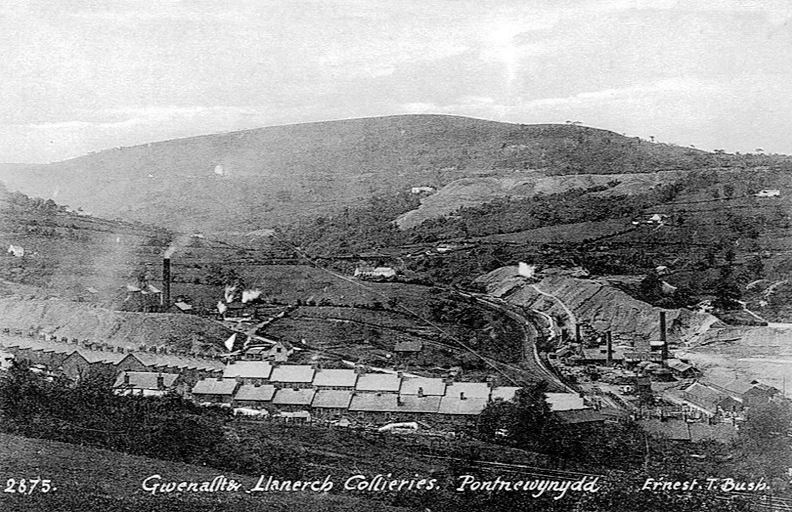 Near Pontypool Afan Lwyd Valley (SO 2635 0166)
Near Pontypool Afan Lwyd Valley (SO 2635 0166)
This mine was also known as Cwmffrwdoer Colliery or Jacks Pit; it was sunk to the steam coal seams in 1900 by John Paton and Company, which was to become Partridge. Jones and John Paton and Company, and in that form to be the largest coal company in Monmouthshire, and one of the largest in the South Wales Coalfield producing 4,500,000 tons of coal from 21 pits in 1937. This company was a member of the Monmouthshire and South Wales Coal Owners Association. Gwenallt Colliery was working the Meadow Vein in 1907 when P.H. Jones was the manager and employed 298 men in 1908 when the manager was still P.H. Jones.
On the 29th of December 1910, Stanley Taylor, a collier, aged 19 years, died in this pit under a roof fall. It employed 252 men in 1913 when the manager was Joseph Morgan, 229 men in 1915 and 221 men in 1916 when the manager was J. Morgan.
It abandoned the Nine-Feet (Black Vein) seam in 1917. In 1918 Mr. Morgan was still manager and it employed 125 men; this rose to 199 men in 1919. On the 21st of July 1920, Alfred Hewitt died under a fall of the roof at this Mine. In 1923 it employed 147 men with manpower then dropping to 25 in 1925/6, 11 in 1928 and in 1929/30 there were
only 7 men working underground and 3 men at the surface of the mine. It officially closed in 1929 when it abandoned the Big Vein. The manager was H.J. Smith. From 1935 to 1938 only 5 men were employed on the surface and 4 men underground, probably on a pumping and maintenance basis. In 1943/5 there were 9 men employed driving a cross measures drift with P.S.H. Jones as manager. Up until 1947 six miners had died at this colliery.
On Nationalisation in 1947 it was placed in the National Coal Board’s, South Western Division’s, No.6 (Monmouthshire) Area, and continued pumping water to protect the local mines until 1969.
The two shafts were 234 and 135 feet deep and were filled in 1967 with washery tailings. Gwenallt Colliery generally produced type 501 High Volatile Coals which were very strongly caking, and used for gas making and coke ovens.
Information supplied by Ray Lawrence and used here with his permission.
Return to previous page
